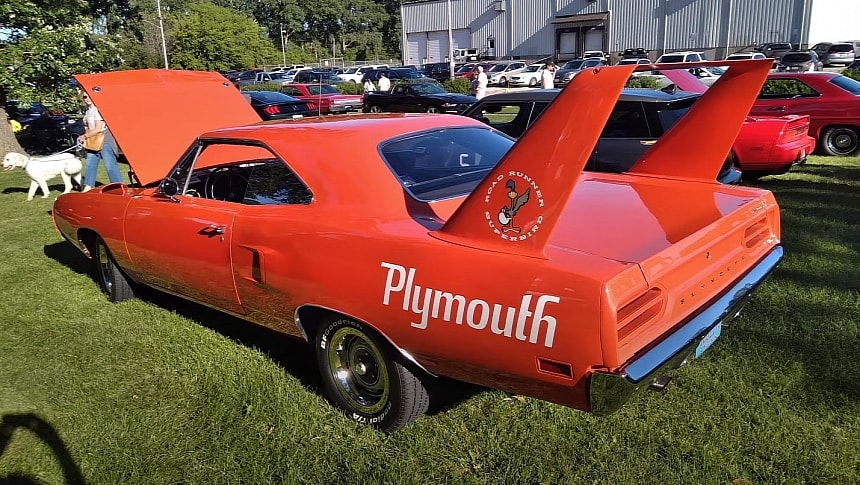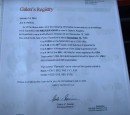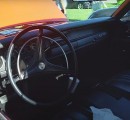In 1969, Dodge took the muscle car segment by storm with the Charger Daytona. Fitted with a quirky nose cone and a massive rear wing, the Daytona found its way into showrooms for homologation purposes. In 1970, Plymouth unleashed its own version of the "winged warrior," the Superbird.
Based on the Road Runner, the Superbird was nearly identical to the Daytona on the outside. You can read more on the features that set them apart in my extensive coverstory. Under the hood, the Superbird also came standard with the four-barrel 440-cubic-inch (7.2-liter) RB, while the 426-cubic-inch (7.0-liter) HEMI was optional. But unlike the Daytona, the Superbird was also available with a six-barrel version of the 440.
Plymouth's "winged warrior" was also produced in notably more units. That's because NASCAR homologation regulations changed from 1969 to 1970. While Dodge was required to build 500 units to make the Daytona eligible (they eventually produced 503), Plymouth had to build a Superbird for every two dealers it had in the US. A minimum of 1,920 examples were required, and the consensus is Plymouth shipped 1,935 in the US and at least 34 to Canada.
While the Daytona sold like hotcakes, Plymouth had trouble moving nearly 2,000 vehicles. Many Superbirds sat unsold on dealer lots for up to two years, while some were converted to Road Runner specs. Come 2024, the Daytona is arguably the most sought-after "winged warrior," but the Superbird is just as spectacular—especially when the car in question is a fine restoration, like this HEMI Orange example, spotted at a car show.
Documented by Mopar expert Galen V. Govier, this Superbird is the very definition of golden-era muscle car perfection. It looks flawless from every angle, the interior is as clean as they get, and the engine bay further confirms that this Superbird was taken apart and restored to a high standard. But don't let the HEMI air cleaner fool you; this Superbird doesn't rely on the mighty 426-cubic-inch V8.
This "winged warrior" left the factory with a four-barrel 440-cubic-inch RB. Sure, it's nowhere near as rare as a HEMI or a Six-Barrel version at 1,084 units sold, but it packs a numbers-matching powerplant. The three-speed automatic transmission narrows that number to 626 examples produced.
In addition to the HEMI air cleaner, the Superbird hides another tiny surprise inside the cabin. It proudly wears Richard Petty's signature on the passenger-side dashboard. Yup, that's the "King" himself, the man who drove the NASCAR-spec Plymouth Superbird in 1970. It probably doesn't add much to the car's value, but it's a nice thing to have, especially since Petty has such a long history with Mopar.
Speaking of value, while they're not worth as much as their HEMI and Six-Barrel siblings, these "base" Superbirds have become increasingly more expensive over the last couple of years. Many examples have sold for over $200,000, while a handful of cars exceeded the $275,000 mark.
Plymouth's "winged warrior" was also produced in notably more units. That's because NASCAR homologation regulations changed from 1969 to 1970. While Dodge was required to build 500 units to make the Daytona eligible (they eventually produced 503), Plymouth had to build a Superbird for every two dealers it had in the US. A minimum of 1,920 examples were required, and the consensus is Plymouth shipped 1,935 in the US and at least 34 to Canada.
While the Daytona sold like hotcakes, Plymouth had trouble moving nearly 2,000 vehicles. Many Superbirds sat unsold on dealer lots for up to two years, while some were converted to Road Runner specs. Come 2024, the Daytona is arguably the most sought-after "winged warrior," but the Superbird is just as spectacular—especially when the car in question is a fine restoration, like this HEMI Orange example, spotted at a car show.
Documented by Mopar expert Galen V. Govier, this Superbird is the very definition of golden-era muscle car perfection. It looks flawless from every angle, the interior is as clean as they get, and the engine bay further confirms that this Superbird was taken apart and restored to a high standard. But don't let the HEMI air cleaner fool you; this Superbird doesn't rely on the mighty 426-cubic-inch V8.
This "winged warrior" left the factory with a four-barrel 440-cubic-inch RB. Sure, it's nowhere near as rare as a HEMI or a Six-Barrel version at 1,084 units sold, but it packs a numbers-matching powerplant. The three-speed automatic transmission narrows that number to 626 examples produced.
In addition to the HEMI air cleaner, the Superbird hides another tiny surprise inside the cabin. It proudly wears Richard Petty's signature on the passenger-side dashboard. Yup, that's the "King" himself, the man who drove the NASCAR-spec Plymouth Superbird in 1970. It probably doesn't add much to the car's value, but it's a nice thing to have, especially since Petty has such a long history with Mopar.
Speaking of value, while they're not worth as much as their HEMI and Six-Barrel siblings, these "base" Superbirds have become increasingly more expensive over the last couple of years. Many examples have sold for over $200,000, while a handful of cars exceeded the $275,000 mark.










